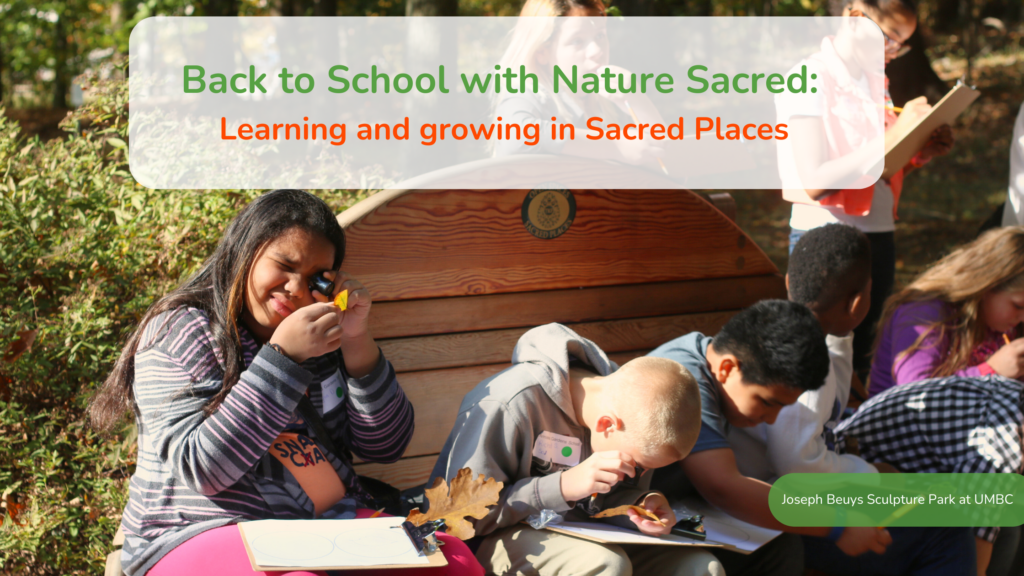In the spirit of the back-to-school season, we want to join our network of school communities around the country in welcoming in the new semester and kicking off the learning season with joy and inspiration. While any Sacred Place can serve as a learning environment, Sacred Places created in partnership with educational institutions — from pre-k through graduate school — provide unique and powerful learning opportunities for students, teachers, and communities at large. Read on as we highlight our School Sacred Places and catch a glimpse of the creative ways that Firesouls are blending learning with nature and healing.
Joseph Beuys Sculpture Park at University of Maryland Baltimore County (UMBC) in Catonsville, MD
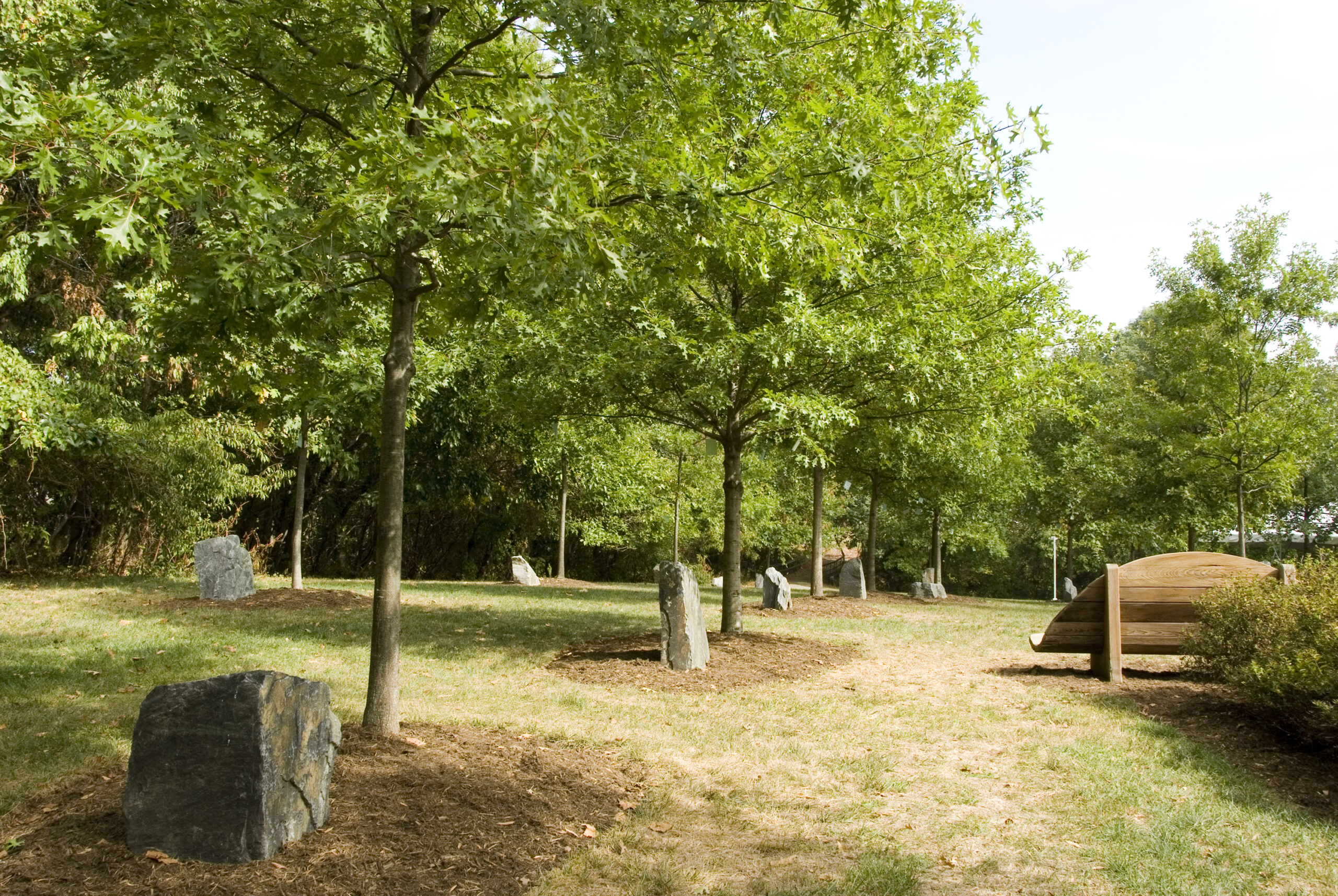
This site is one of four installations of the Joseph Beuys Tree Partnership in the Nature Sacred Network. Beuys, an influential German artist who came to prominence in the 1960s is internationally known for his performances, sculptures, environments, vitrines, prints, posters, and thousands of drawings. He was a charismatic and controversial artist, a committed teacher, and a political activist. Beuys highlighted the need for greater environmental awareness across the globe through his ongoing social sculpture project entitled, 7000 Oaks.
Thirty trees and stones were placed at UMBC’s sacred space, and each year the ensuing growth of each tree adds to the significance of the site. The Nature Sacred bench rests in the middle of the garden area. In its heart the journal has enveloped the joy, sorrows, loves, heartbreaks worries and motivations of numerous UMBC students as they write in it since 2002.
Today, Firesoul Sandra Abbott and Rebecca Uchill continue to spread the educational power of Beuys vision beyond the UMBC student community. In partnership with local educators and the Baltimore City School System, Sandra routinely brings students into the Sacred Place to learn about the environment, design, elements of art and to interact with nature. The outdoor and hands-on activities that Sandra has developed not only meet the City’s curricular art requirements, but they also foster soft skills such as interpersonal communication and social and emotional learning. Sandra has just unveiled a brand-new approach to this long-standing program and is eager to continue her work with more Baltimore City students throughout this school year.
Garden of Reflection and Remembrance & The Listening Garden at The University of Maryland College Park
The Garden of Reflection and Remembrance, and the Listening Garden at the University of Maryland site on opposite sides of the Memorial Chapel on campus. The Garden of Reflection and Remembrance is one of Nature Sacred’s oldest sites and was created in part as a response to tragic events that took place on school campuses and around the country and was intended to provide a space for students and the school community to process and grieve.
The Garden of Reflection and Remembrance now serves multiple university populations in diverse ways. It provides a place of respite, healing and contemplation, while catalyzing connections between multiple groups and cultures within the large campus population. For both the labyrinth and the greater memorial garden space, the Student Affairs Office offers programming opportunities which embrace multiculturalism as they encourage people to take time for reflection and renewal.
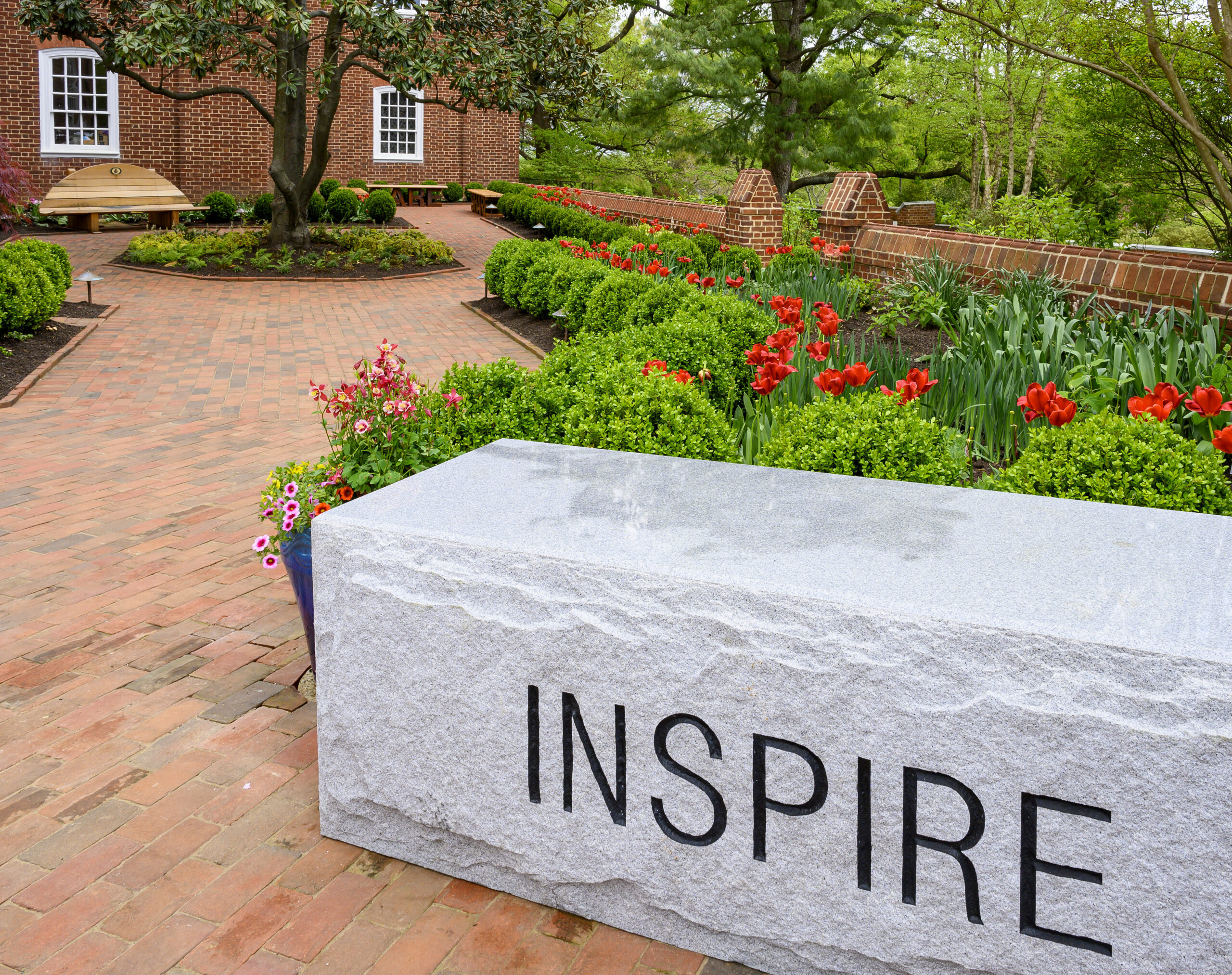
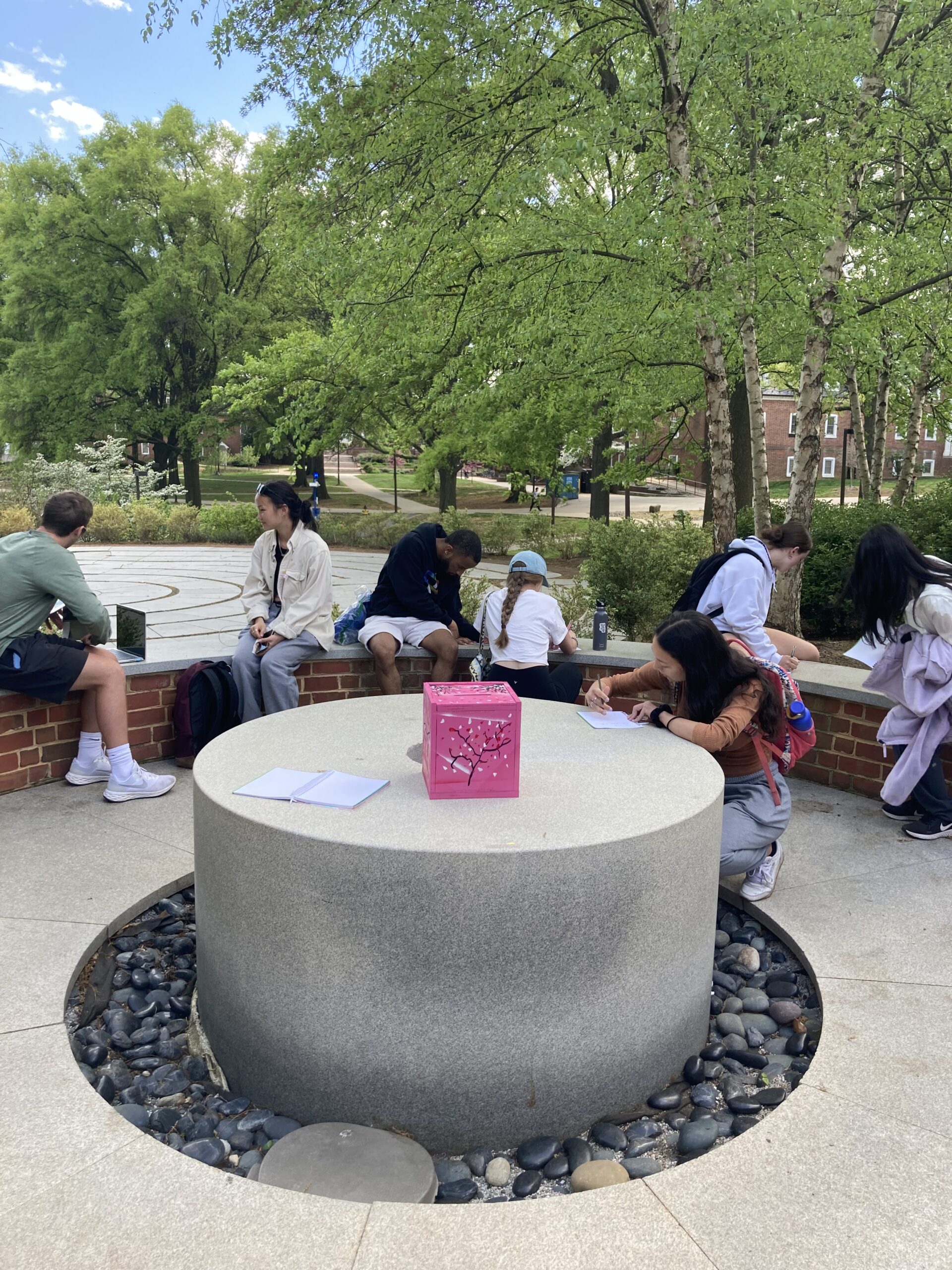
Over 20 years after the creation of the original Sacred Place, the University decided to extend the impact and reach of the garden. Just this year, The Listening Garden was officially opened. Located just across the entranceway from the Garden of Reflection and Remembrance, The Listening Garden is a place for the University community to come together and foster healthy conversation. Many benches that each feature a poetic word intended to invoke the spirit of this space are scattered throughout the garden, and the Nature Sacred bench also provides a comfortable spot to sit, converse and write in the journal. Student organizations, faculty members, chaplains, and staff are encouraged to utilize this unique space for programming, events, meetings, faith-based sessions, and classes. The Garden also will be available for drop-by, unscheduled gatherings. These occasions, formal and informal, offer students the opportunity to grow their listening skills and their ability to communicate with each other as well as simply enjoy being out in nature.
The Stoner Courtyard and Warden’s Garden at the UPenn Museum of Archaeology and Anthropology
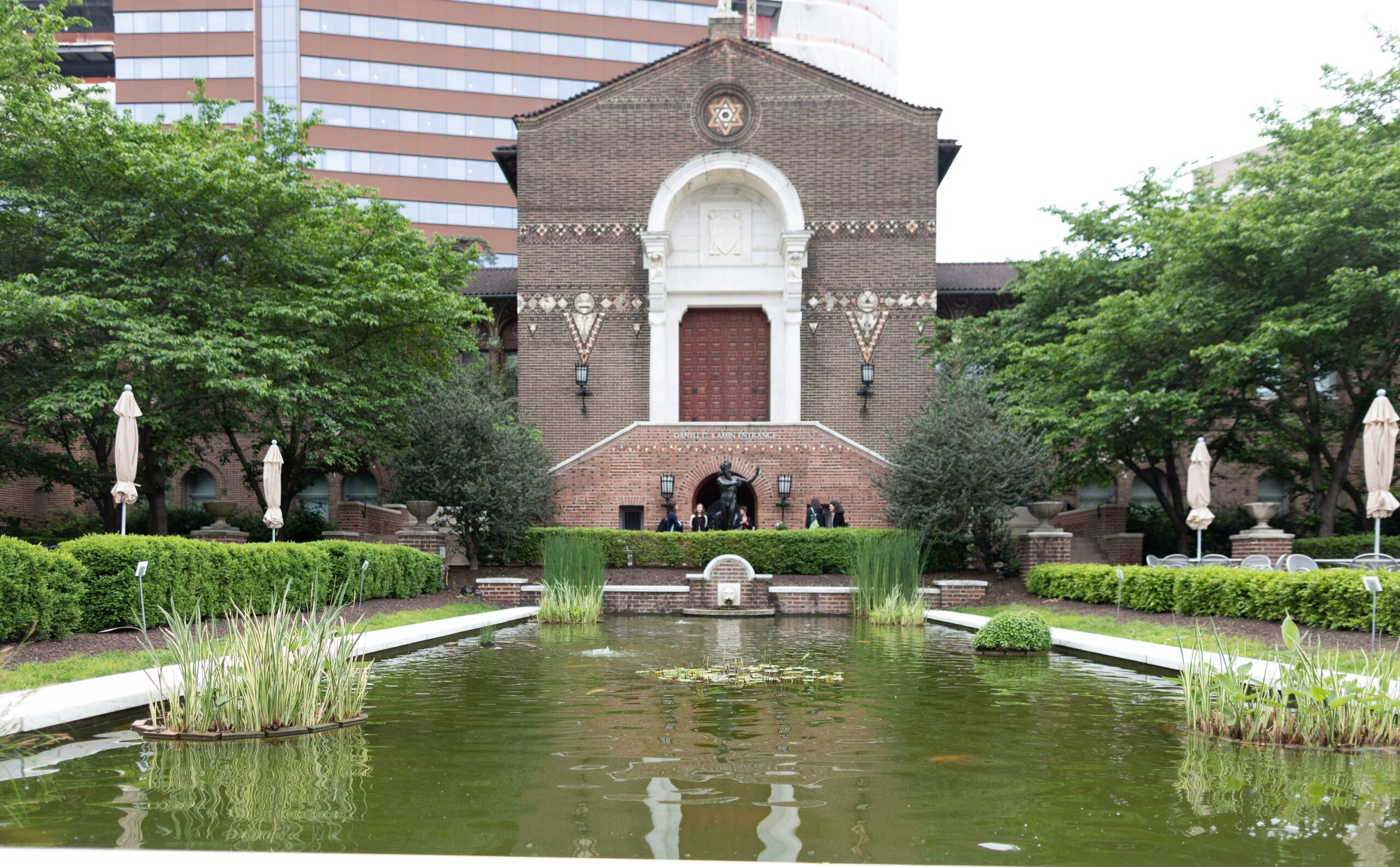
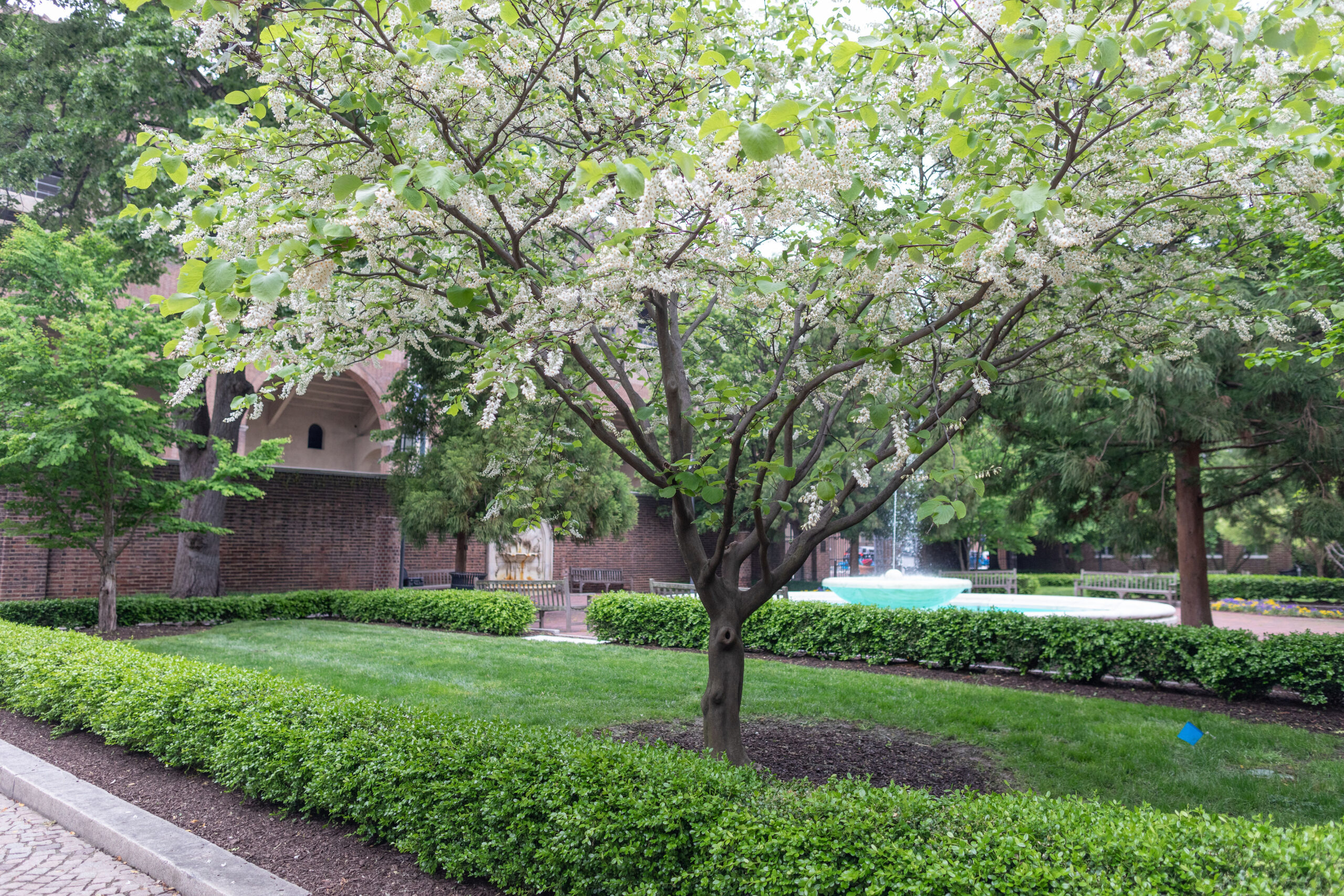
The Stoner Courtyard was implemented in 1998 during a renovation project for the University of Pennsylvania Museum of Archaeology and Anthropology. Before renovation, the courtyard was claimed by parked cars and transient traffic, not allowing much pedestrian traffic to enjoy the outdoor space adjacent to the museum. Nature Sacred played a role in transforming the space into a fully landscaped public place for walking, gathering, sitting and reflecting. The garden is seen as an extension of the museum, as its design, paving materials and plantings are reflective of the eclectic collections housed within the museum. The Stoner Courtyard is now an inviting and attractive urban green space for families, students, community members, and of course, museum visitors.
Honoring Our Ancestors, Enacting Our Dreams Garden at Talladega College in Talladega, AL
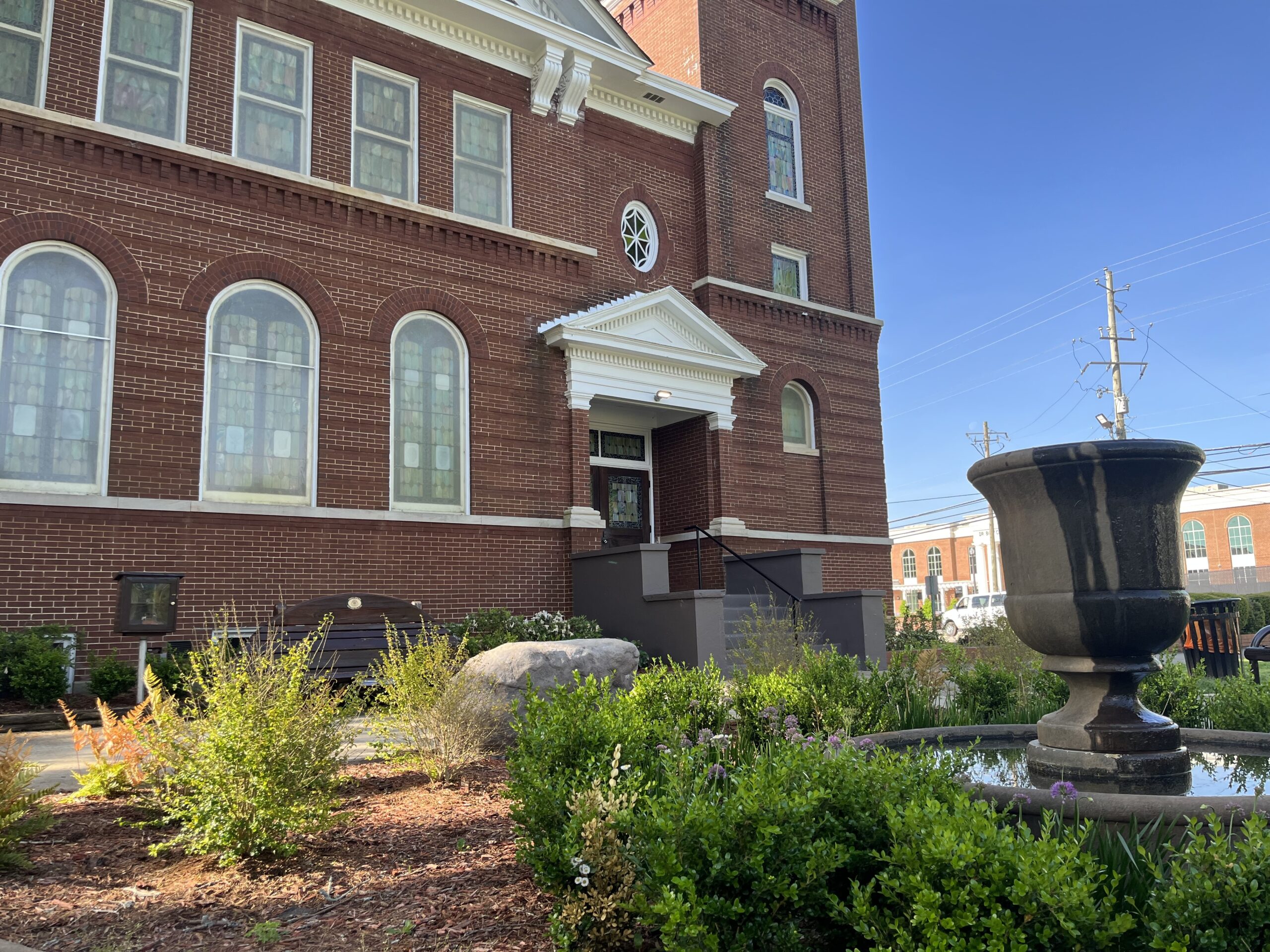
In the historic district of Talladega, AL, and tucked in the foothills of the Blue Ridge Mountains, sits Talladega College, Alabama’s oldest private historically black college. The campus is uniquely positioned for a Sacred Place—as it resides in an already quiet place, removed from nearby urban hustle. In recent years, the college has conducted a hot of initiatives focusing on increasing its interaction with the surrounding community, and a Sacred Place was yet another outlet to accomplish this.
This Sacred Place is outside the college’s Chapel—one of the campus hallmarks and home to most of the campus engagement—providing outdoor seating where previously the chapel steps were the only option. Amidst an academic environment that can be intense and ever active, this Sacred Place reemphasizes the importance of moments of relaxation and allowing time to absorb what one is learning. It is an opportunity to let the student body, staff and public come to sit, reflect, and renew in a serene, natural setting.
St. Mary’s Elementary School in Annapolis, MD
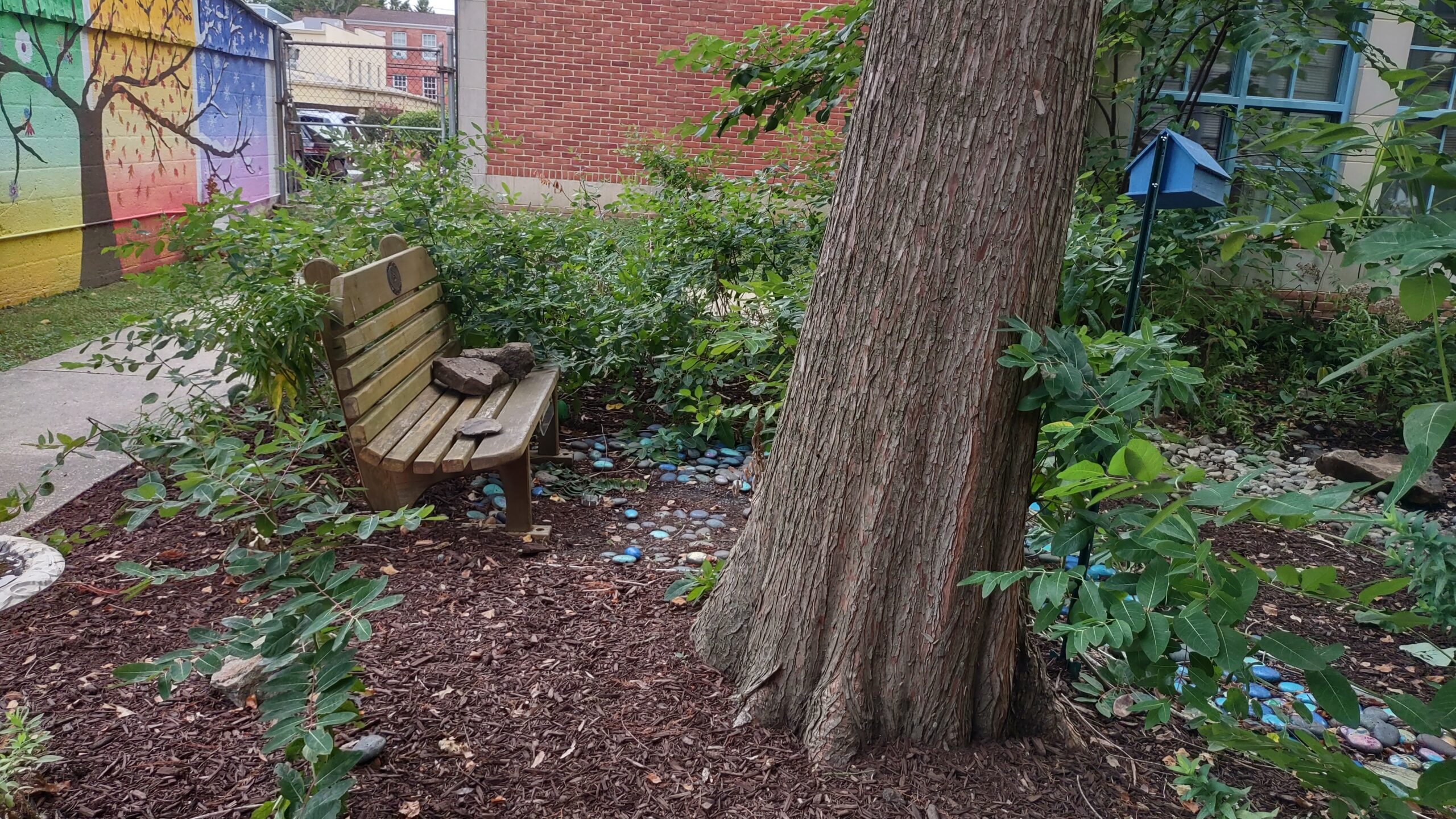
Located in the heart of historic downtown Annapolis, St. Mary’s Elementary School is home to one of the very first Sacred Places. St. Mary’s celebrates the inspired programs that spring to life in these kinds of urban settings; this garden has hosted many project-based environmental education programs over the years. Moreover, the St. Mary’s Parish has retrofitted a 2.1 acre parking lot with 9 rain gardens to thwart stormwater runoff into the adjacent Spa Creek. The students are involved in maintaining these native, pollutant-absorbing gardens—enriching a deep understanding of environmental stewardship and STEM subject matter.
All are welcome at St. Mary’s, a principle embodied by a colorful river of painted rocks meandering past the Nature Sacred bench. Each stone was individually hand-painted by students in a meaningful and creative exercise of inclusion — an inspiration as we reimagine our cities to be more sustainable, resilient and unified.
St. Pauls School in Brooklandville, MD
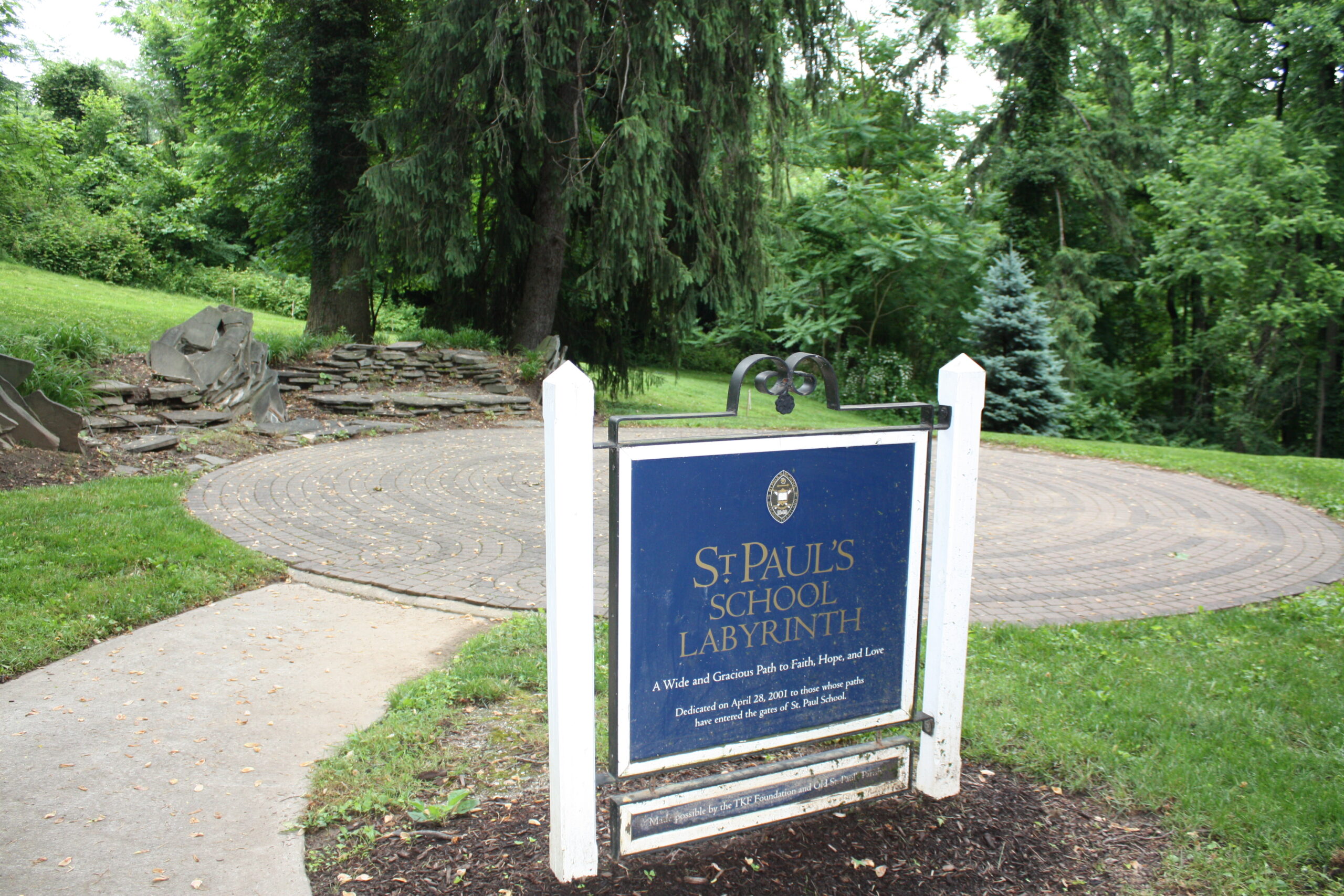
St. Paul’s School is a K-12 college preparatory school located near Baltimore City. Here on the campus, you can find both a community labyrinth and peace/meditation garden, important tools for students and the greater community to help in understanding how important quiet time is for maintaining a physically, mentally and spiritually balanced life. Both the community and faculty use the labyrinth for workshops, community events and class sessions. Though St. Paul’s is not located directly in Baltimore City, the school values its relationship with the Baltimore City community. St. Pauls fosters its relationship with the city’s school system, exemplified through summer programs that invite multiple BCPS groups in to walk the labyrinth, engage in programming, and enjoy the garden. Curiosity surrounding the labyrinth has played a role in building and strengthening community bonds, as everyone has an interest in it. The location of the labyrinth allows for privacy for people trying it for the first time, or those coming back many times experiencing peace and meditation in life.
St. Timothy’s School in Stevensville, MD
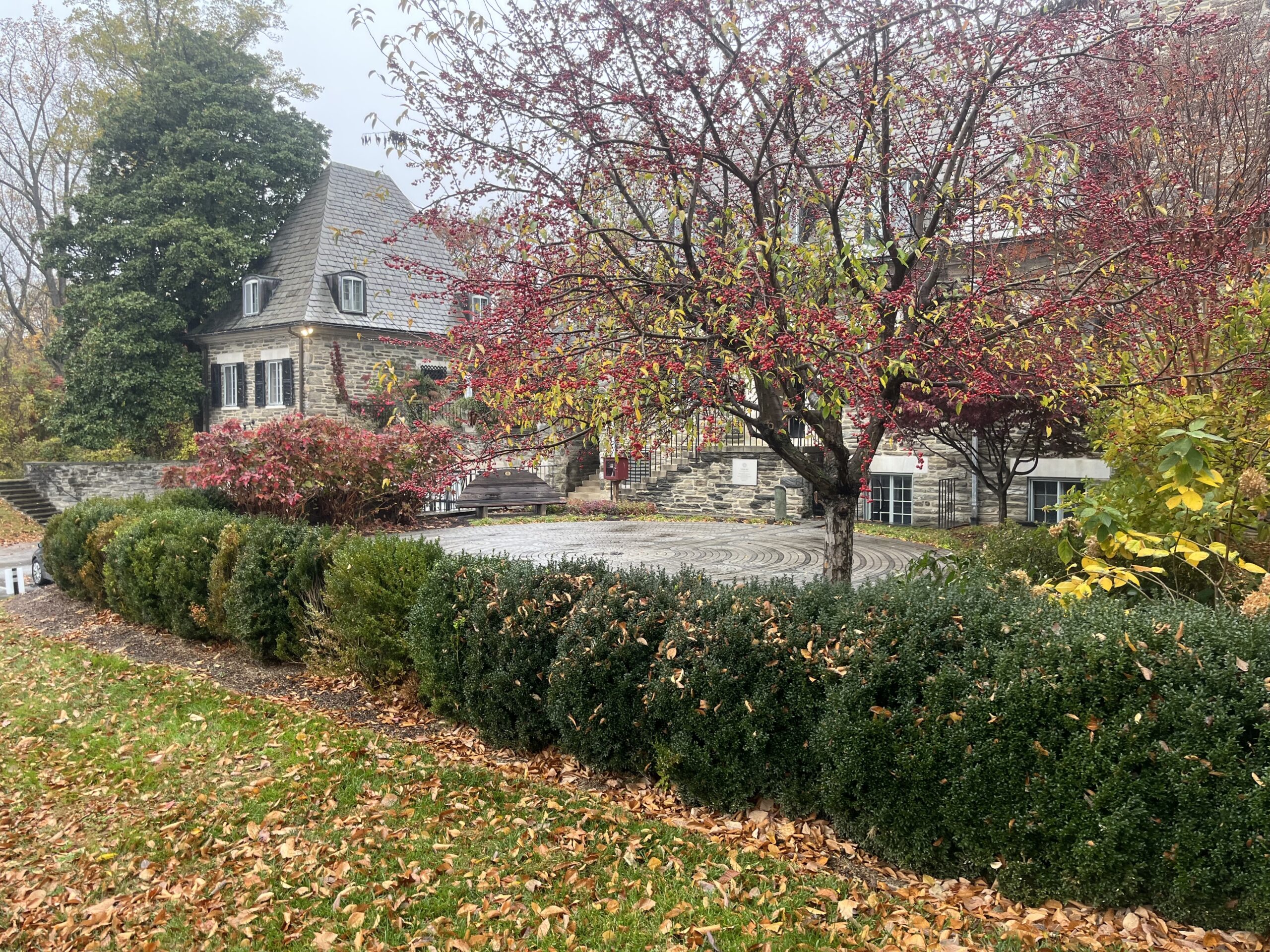
St. Timothy’s is an all girls private residential and day school located just north of Baltimore City. With a large emphasis on interfaith connection, diverse perspectives and community building, alongside mindfulness and wellness, St. Timothy’s support their students holistically — physically, emotionally and spiritually.
The labyrinth, the hallmark of the Sacred Place at St. Timothy’s, was initially installed as a gift from the Class of 1965. Nature Sacred supported the installation in the Fall of 2015. The space was finalized with a large Nature Sacred bench and instructional signage on how to walk a labyrinth.
The labyrinth at St. Timothy’s is frequented by students and staff alike who are in need of a mindful moment of calm, but is also incorporated into school and campus life. Wellness Program Director and Firesoul Mary Ann Salim incorporates the Sacred Place in mental, physical and emotional wellness activities, educational workshops and programs throughout the school year.
The Roots and Wings Garden at The Key School in Annapolis, MD
The Key School in Annapolis engages children from 2.5 years of age until 12th grade in an expansive educational curriculum. The school grounds were already home to a Sacred Place, but over the years the boundary of the Sacred Place shifted as the school’s built environment changed. Rediscovered in 2018 by a group of Key School students, the Nature Sacred bench and Sacred Place became the subject of a podcast, reinvigorating the communities need and want for an updated Sacred Place.
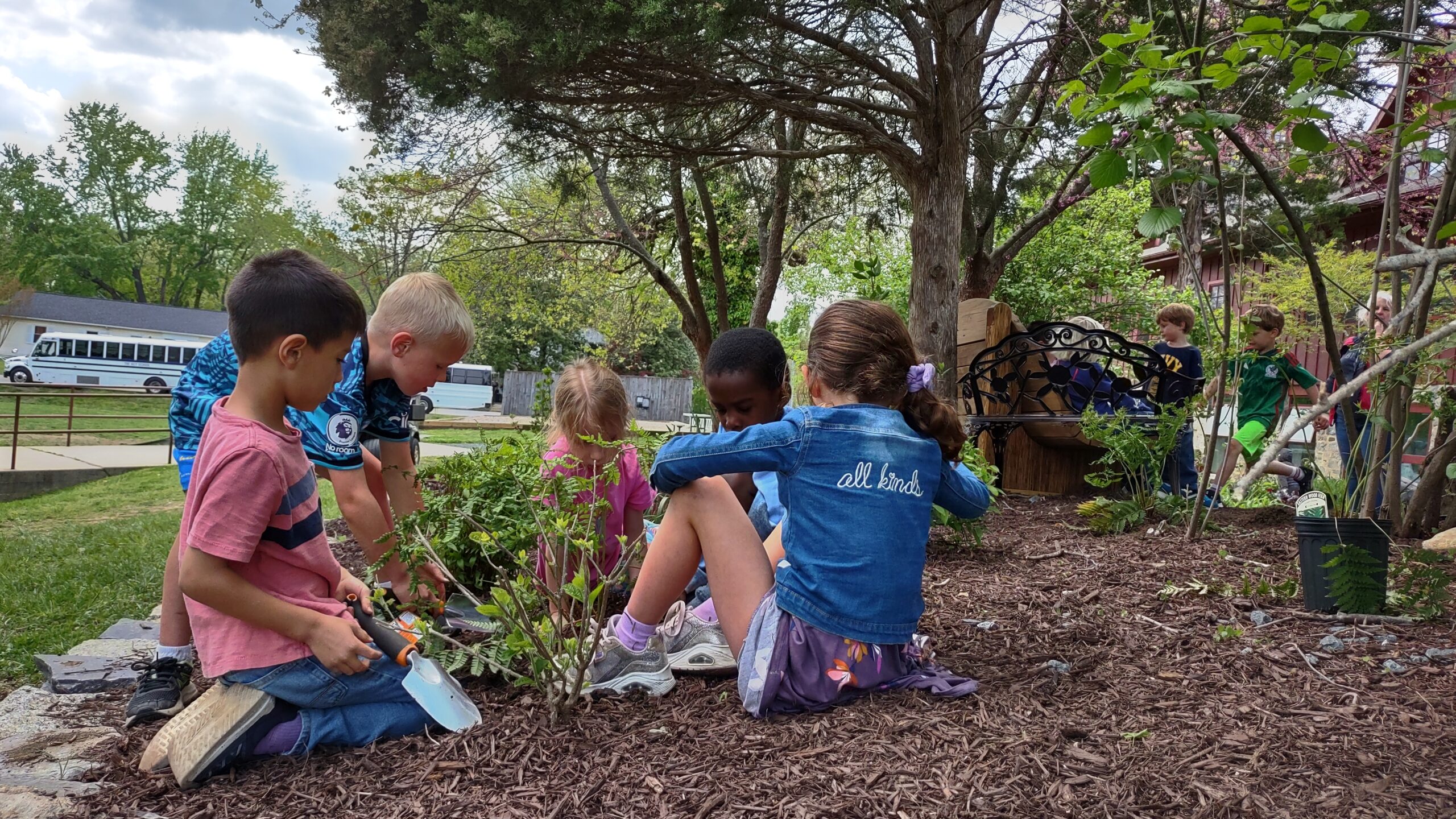
In collaboration with stakeholder groups of Key students and faculty, a new Sacred Place was designed to engage students of all ages. Students identified having gathering spots for both individual and group use; and having enough gathering spaces that multiple groups could use the space at a time without feeling crowded as key needs for the design. They also highlighted using bright colors, hanging additional bird houses, and having a curved pathway enabling two entry points to the site.
The site’s proximity to the First School encouraged the design team to provide the younger students with a reason to be captivated by the garden with elements of whimsy and creativity. The kindergarten classes participated in creating fairy houses to place onsite, an installation that can grow and shift and offers the opportunity for anyone of any age to engage with the space in a unique interactive way. The students listened to Tracy Kane’s story Fairy Houses, then followed the ‘rules of the forest’ to build their houses in this garden.
Looking ahead
Each school community brings their own magic to the Network. The collaboration, creativity and wonder that school Firesouls bring to their communities not only inspires those who engage with them, but also extends beyond the physical boundaries of their Sacred Place. By engaging young people in nature, these Firesouls and educational champions help to foster a future of compassion, care and love for one another and for nature each and every day.
This impressive and robust crew of School Sacred Place communities is growing! Our Design Team is currently working with other school communities as they develop their visions for their future Sacred Places, including César Chávez School in Hyattsville, MD, Jacksonville State University in Jacksonville, AL, Bright Beginnings in Washington, D.C, and The Hive at Cultivate Collective in Chicago, IL. We can’t wait to see what amazing things these future sites do.
